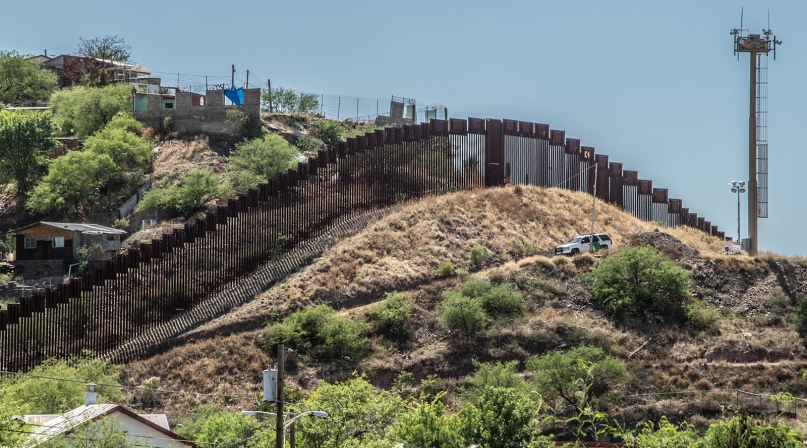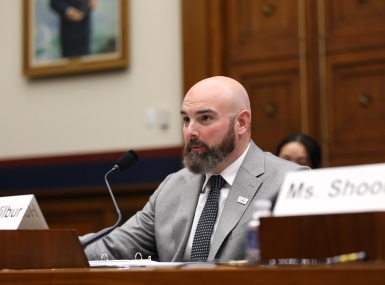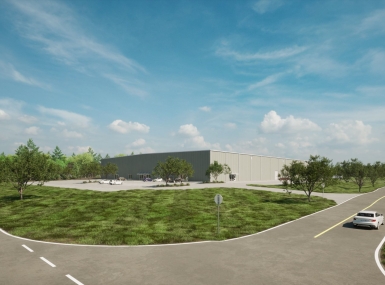On the border: County officials talk pluses, minuses

Key Takeaways
Known for its juicy red grapefruit grown in fertile valleys, a juke box museum and good eating at places like Jethro’s Barbecue, Hidalgo County stretches more than 1,500 square miles across southern Texas, abutting the Rio Grande along the Mexican border.
It’s also a county at center stage, as the federal government shutdown that began last month continues over disagreements on funding for a wall along the U.S.-Mexican border.
County officials in communities along the border say their jobs can be challenging when it comes to immigration. Regional economic uncertainty, shelter overcrowding in some places and fears of potential public health crises are just a few of the thorny realities that pop up on a regular basis in the news.
“There’s a misconception out there that crime here is similar to what Mexico is experiencing and that is totally not true,” said Hidalgo County Judge Richard Cortez, who was sworn into office last week to preside over the commissioners court and previously served as mayor of McAllen. The FBI ranked McAllen, the largest city in Hidalgo County, #18 among Texas cities when it comes to violent crime.
San Diego County Supervisor Kristin Gaspar agrees. “Border counties are often associated with violence and high crime, however, law enforcement in San Diego County has been very strong and collaborative, maintaining a high standard for public safety throughout our region,” she said. “San Diego was recently acknowledged for having one of the lowest crime rates in the country for a city its size.”
One of the good things about being a border town is seeing an economic boost in the local economy, at least in Hidalgo County. “Because we are on the border, the nationals from Mexico, with a proper visa, can shop and enjoy the American lifestyle,” Cruz said. Some areas in Texas see a third of their sales tax revenues come from Mexican shoppers, he said. With higher sales taxes in Mexico, he noted, “a lot of the consumers prefer to shop over here.”
“We all know the best dollar out there to a government is the dollar from a tourist, because we don’t have to provide services to a tourist,” he said.
The Rio South Texas Economic Council reported last month that Hidalgo County sales tax revenue was up by more than 8 percent compared to 2017. “Our friends across the border… continue to be our guests and visitors,” Matt Ruszczak, the group’s executive director told the Rio Grande Guardian. “They continue to enjoy shopping opportunities in our region.”
“Relationships between local elected officials on both sides is good,” Cortez emphasized. Legal ports of entry, he said, are crucial for the regional economy. “Mexico is the largest trading partner with Texas,” he said. “If we invest in legal ports of entry we at least have the financial resources to combat the bad things. More investment in infrastructure and personnel would be beneficial.”
Gaspar echoes those sentiments. “We have forged many incredible relationships with our southern neighbors that have led to remarkable bi-national partnerships for government, businesses and education,” she said.
“Our local leaders, along with the San Diego Regional Chamber of Commerce, are very proactive in forging partnerships with our counterparts in Mexico and our region has become a national model for successful cross-border commerce.”
“There are many companies on both sides of the border that benefit from the proximity,” she noted.
‘We need the migrants’
One of the biggest impacts to businesses in some counties is the use of the migrant population for certain jobs, said Pima County, Ariz. Supervisor Sharon Bronson. “Whether you live in Iowa or Arizona — if you own a farm, you use migrants to pick your crops, and in Arizona, we are very much dependent on migrants when it comes to agriculture, so we need the migrants and they are contributing to our economy. I can’t emphasize enough how entwined our economies are, for those of us along the U.S.-Mexican border. Economies don’t stop with international borders.”
Another one of the ways a local economy benefits, she said, is when Mexican residents visit local hospitals for treatment, for example. “Those hospitals have been working with their counterparts south of the border,” she noted.
Pima County is one of four counties in Arizona that abut Mexico; the others are Yuma, Santa Cruz and Cochise. As a member of the Arizona Border Counties Coalition, Bronson and her counterparts in those counties would like to see expanded ports of entry and improving infrastructure at the border, she said.
Bronson, who expects to rotate soon out of her chairing duties on the Pima County Board of Supervisors, hopes to concentrate more heavily on border-related economic development. “Our economic strengths are in aerospace and defense, bio-technology, intermodal transportation and the medical aspect where we have hospitals working with each other across the border, so those are our opportunities,” she said. “What we’re seeing — particularly in aerospace and defense, is that a lot of the assembly is being done south of the border, in parts, and then they’re shipped back here.”
The county has also had to deal with the use of its police force in handling border patrol duties, she said. “One of the challenges we have is there are a number of grants related to immigration and we have 3,500-plus custom and border patrol. We need more emphasis on customs than border patrol. Why are our law enforcement officers in Pima County — why are we being asked to do the federal job and not being compensated?”
“These grants are not transparent or cost-effective for us,” she said, “because we’re not fully reimbursed, we have to pass that along to our taxpayers when it’s essentially a federal responsibility.”
There are about 300 border agents working in and around Luna County, N.M., said Luna County Commissioner John Sweetser. Known for its farms yielding green and red chili peppers, it sits just over the border from Mexico. About two-thirds of the population in the county are Hispanic. A chili pepper processing plant employs about 900 people during harvest season.
Living in a county on the border can lead to some interesting arrangements. “We have a school here, where kids come over from the town of Palomas in Mexico,” Sweetser said. “The school system sends buses that pick them up, several hundred of them, to go to school in the United States. They’re actually U.S. citizens; they were born here, but their parents live in Mexico and so they get educated here.”
San Diego County has also created education opportunities, Gaspar said. San Diego Unified School District collaborated with the Mexican consulate to create educational programs that benefit tens of thousands of children from both countries.
The San Ysidro Port of Entry there is the largest land border crossing, between San Diego and Tijuana. “Many of the challenges we face ... must be addressed with the cooperation and support from our state and federal governments,” she said.
“Being able to share information between jurisdictions is extremely important to make our region stronger.”
In Luna County, the immigration issue is on a smaller scale, but still presents challenges, Sweetser said. “Living close to the border, it’s personal sometimes. If you live back East or away from the border, you’re not getting the whole picture.”

Attachments
Related News

NACo testifies before Congress on brownfields revitalization
On May 7, Oswego County, N.Y. Clerk Terry Wilbur testified on behalf of NACo before the U.S. House Subcommittee on Water Resources and Environment at a hearing titled “Cleaning Up the Past, Building the Future: The Brownfields Program”.

County’s groundwork helps set the stage for energy breakthrough
Amid the high-level work that put groundbreaking geothermal energy projects into Beaver County, Utah, the local work has been crucial to making the endeavors a success.

North Carolina county shell building program draws new businesses
Nash County, N.C. invites potential new businesses to see themselves and their operations in large shell buildings the county erects in its business parks.
